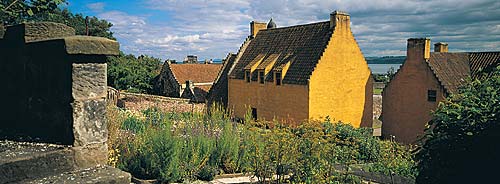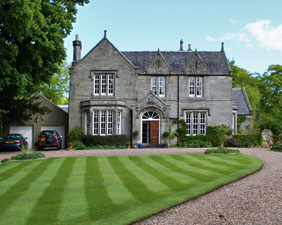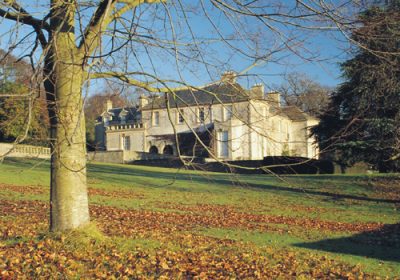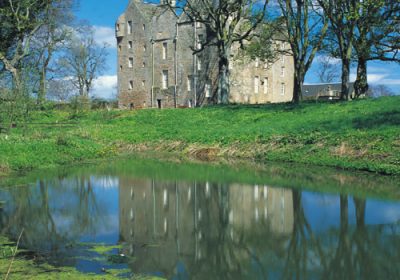The Royal Burgh of Culross
Description
Everywhere you look in Culross you’re surrounded by the past. Close your eyes and you can almost hear the calls of medieval street vendors selling their wares and the clang of hammers on metal as the Hammermen of Culross fashioned the famous girdles. With many industries including coal mining, salt panning and ironworking, Culross enjoyed a flourishing trade with other Forth ports and the Low Countries. This picturesque Royal Burgh on the northern shore of the Forth is a complete community, preserved as it was in the 16th and 17th centuries.
Today, you can visit Culross Palace and imagine what it would have been like to live within the splendid interiors, featuring painted woodwork, and 17th- and 18th-century furniture. There is also a fine collection of Staffordshire and Scottish pottery. The herbs, vegetables and fruit trees in the palace gardens would all have been found in an early 17th-century garden, as would the Scots Dumpy hens who supply eggs for the Bessie Bar
tearoom.
tearoom.
The Town House, once the legal and commercial centre of Culross, is also open to visitors. Upstairs, the fine Georgian interior of the council chambers often houses exhibitions, whilst next door is the old courtroom. Downstairs in the shop is the debtors’ cell, where, unlike previous occupants, you may decide only to spend a few moments!
Elsewhere, you can visit the Study, where Bishop Leighton of Dunblane reputedly composed his sermons. Also in the village are the ruins of St Mungo’s Chapel, the Abbey and the old monastery. A DVD about Culross and its inhabitants can be viewed in the palace.
Acquisition details
St Mungo’s Chapel presented by the Earl of Elgin (1947). Town House and The Study presented by the Royal Burgh (1975)
St Mungo’s Chapel presented by the Earl of Elgin (1947). Town House and The Study presented by the Royal Burgh (1975)




